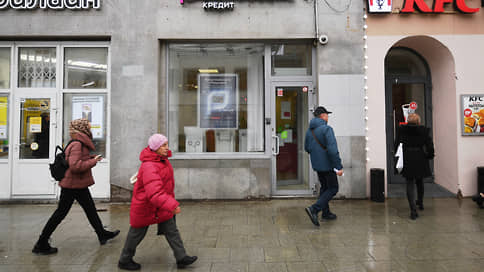Consumer loans are split on consumers
[ad_1]

In February, the issuance of consumer loans was significantly lower than a year earlier, according to the BKI data. There was no traditional rebound from the festive January, and the average check is also decreasing. Meanwhile, the average size of overdue loans in the segment is growing. In such conditions, market participants are in no hurry to issue large amounts, diversifying risks, but expect to ensure the growth of the portfolio with the number of loans.
“Scoring Bureau” (included in the top 3) summed up the results of February in the segment of consumer loans (except for card loans). According to the data that Kommersant got acquainted with, in February 2023, 2.35 million consumer loans were issued for 431.8 billion rubles. In monetary terms, this is less than a year earlier, by 12.3%. At the same time, the February issue is only 1.7% more than the traditionally disastrous January. In quantitative terms, the second month of 2023 also lost in terms of loans even in January: 2.35 million loans against 2.4 million, respectively.
At the same time, the average check in this segment has been stagnating lately: 183 thousand rubles. in February, 176.14 thousand rubles. in January, 188.7 thousand rubles – in December 2022. In February last year, this figure was much higher – 240 thousand rubles.
According to the Scoring Bureau, the portfolio of consumer loans as of February 28 amounted to 7.94 trillion rubles, having increased by 1.18% since the beginning of the year. Overdue 90+ in the portfolio reached 712 billion rubles, showing an increase of 6.6% since the beginning of the year.
Against the backdrop of outstripping growth in delinquency and stagnation of the average check, the average amount of overdue consumer credit in February reached a maximum since 2021 – 145.6 thousand rubles. For comparison: according to the results of February last year, the figure was 9% less and amounted to 132.5 thousand rubles.
The year-on-year decrease in the average issue check against the background of an increase in the average size of overdue consumer loans allows us to conclude that overdue loans are growing faster for large loans, so banks are trying to issue smaller loans. “In the event of crisis scenarios, banks most significantly tighten their risk policies in this particular area… they do not increase lending limits and try to maintain the volume of consumer lending by increasing their number,” says Natalia Bogomolova, an analyst at NRA banking ratings.— Significant growth in this area will not be”.
According to Valeriy Pivn, head of the financial institutions rating group at ACRA, it is the number of issues that will stimulate growth. “Banks are more willing to lend to small customers, seeking to increase diversification,” he explains. “In addition, given the low flexibility of non-interest income on a loan, a decrease in a check allows you to increase the profitability of a loan.”
Despite the fact that February did not bring a revival of consumer lending, market participants and experts are cautiously optimistic. “In general, we expect growth in this segment by 10% per year, although it will be limited by the actions of the Central Bank of the Russian Federation in the form of macroprudential limits aimed at reducing the accumulation of risks in the face of low growth in household incomes and deteriorating lending standards,” says Ms. Bogomolova. “In the context of a stable monetary policy, we expect a gradual increase in demand for cash loans, which will positively affect the growth of the general market retail portfolio,” VTB added.
“According to our assessment, in the near future, the issuance of non-targeted cash loans will begin to grow,” says Andrey Spivakov, Chief Executive Officer of HCF-Bank. expenses in connection with the approach of the summer season, for which cash loans are most often taken.
NKR Managing Director Mikhail Doronkin expects “some acceleration in issuance in the coming months”, although the market dynamics, in his opinion, will remain below 2021, including due to a noticeably higher cost of loans. Despite the declared low rates, the expert explains, they can only be obtained if you purchase an insurance policy that can increase the total cost by two or three times.
[ad_2]
Source link





